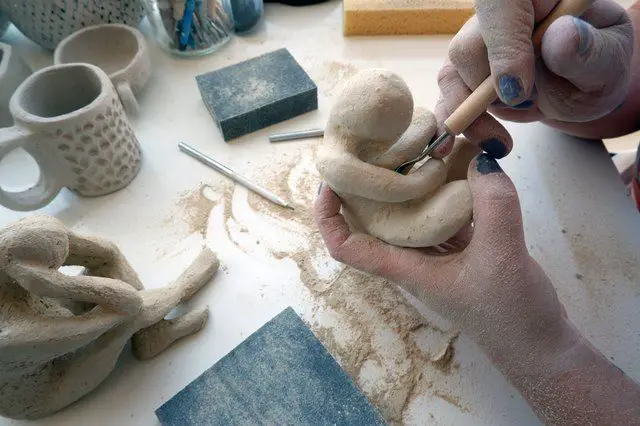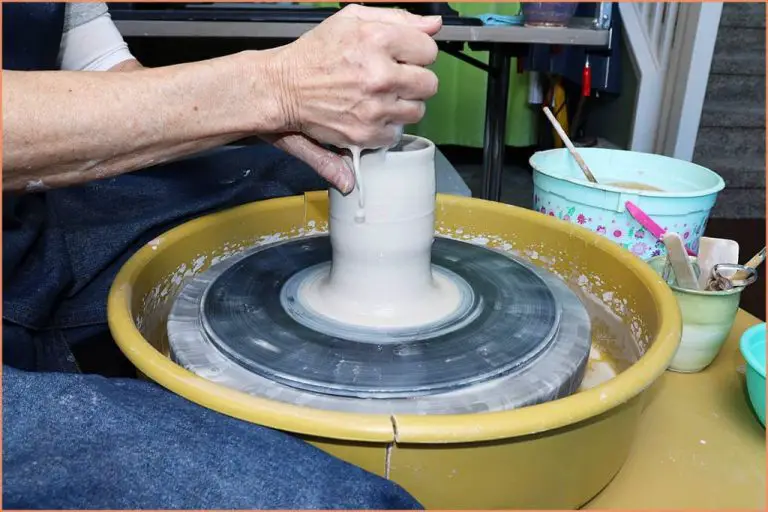How Were Greek Terracotta Vases Made?
Greek terracotta vases were an important part of ancient Greek culture for centuries. They were produced from the 8th century BCE until late antiquity and served a variety of purposes including holding liquids like wine and water, and also foods like oil and grains. Terracotta vases were common in ancient Greek homes and were often given as gifts or prizes.
Terracotta is an earthenware clay that when fired turns a distinctive red-orange color. The ancient Greeks became masters at producing finely crafted and intricately decorated terracotta vases. Different styles and techniques emerged over the centuries influenced by the major artistic movements. Greek vases provide a unique window into ancient Greek society depicting scenes from mythology, everyday life, religious rituals, and major historical events. Their ubiquity means archaeologists have discovered countless examples providing valuable insights into the culture.
The legacy and artistic merit of Greek vases continues to this day with their distinctive shape and decoration inspiring artists and designers around the world. Museums contain many priceless examples of Greek vases that stand as true feats of ancient craftsmanship.
Materials
Greek terracotta vases were made from special clay that potters carefully selected and prepared. The clay came from local sources and varied between production regions, resulting in subtle differences in color and texture.
Attic clay from the mountains around Athens tended to be more orange or red in hue. Corinthian clay from deposits near the city of Corinth was pale yellow. Clay from the island of Rhodes produced vases with a distinctive pinkish tone.
The clay was shaped when relatively wet and flexible, but hardened significantly during drying and firing. To improve workability, potters added temper materials like straw, animal dung, crushed pottery, or sand to prevent cracking and add plasticity. The ratio of clay to additives affected the vase’s final porousness and sturdiness.
Another essential material was slip – liquid clay used to coat the vase before decoration and firing. Slip provided an even, smoothed surface for painting. Potters also applied colorful glazes made from minerals, plants, or corals mixed with a binder. The glazes helped seal and preserve painted designs.
Shaping Techniques
The ancient Greeks used several techniques to shape their iconic terracotta vases. The most common methods were wheel throwing, coiling, and molding.
Wheel Throwing
Wheel throwing was the primary technique used by Greek potters. The potter would sit at a turntable called a wheel and shape the wet clay by hand as the wheel spun. This allowed the creation of perfectly symmetrical pots. Skilled throwers could shape a basic vase very quickly at the wheel.
Coiling
Coiling was another common shaping technique. Long ropes of clay were rolled then stacked on top of one another to build up the vessel walls. The coils were then smoothed together using fingers and tools. Coiling was often used to make larger vessels or those with more complex shapes.
Molding
For some vessel types, molds were used to form the basic shape. The clay would be pressed into a clay mold then removed and finished by hand. This allowed for consistent shapes and decorative designs in production pottery.
Decoration
Greek terracotta vases were often beautifully decorated using a variety of techniques. The most common decorative techniques were painting, incising, and glazing.
Painting – Vase painters used mineral pigments to apply decorations directly onto the surface of the fired clay. Common colors included black, red, yellow, and white. Painted decorations included figures, animals, geometric patterns, and floral designs. The paintings depicted scenes from daily life, mythology, athletics, and more.
Incising – Incising involved scratching designs directly into the surface of the leather-hard clay before firing using a sharp tool. This created a recessed decorative line that stood out on the finished vase. Incising was often used in combination with painting.
Glazing – Terracotta vases were sometimes decorated with a glossy glaze made from minerals, oxides, and sand. The glaze was applied to the bisque fired pot and then fired again, producing a glassy shiny surface that enhanced the decorative colors. Glazes came in black, red, brown, and white.
Firing Process
An important stage in producing Greek vases was the firing process. This involved placing the shaped and decorated but unfired vessels into a kiln and heating them to high temperatures. The ancient Greeks used a variety of kiln types including the circular updraft kiln and simpler pit kilns dug into the ground. Temperatures reached inside could vary from 800 to 1000 °C depending on factors like the size of the kiln and the amount of air allowed inside.
Firing served to harden the clay body and complete the chemical reactions between clay particles. Proper firing was crucial since underfired ceramics could remain porous and prone to crumbling. The atmosphere inside the kiln affected the finished color and appearance through oxidation and reduction firing. Oxidation firing involved allowing air flow which produced reddish tones, while reduction firing limited air exposure leading to gray or black colors. The ancient Greeks learned to control factors like air intake to manipulate the atmosphere and achieve desired visual qualities.
The firing process transformed the soft clay into permanent and durable vessels ready for use. It was a delicate operation requiring careful monitoring of timing and temperatures. When done successfully, the firing stage finalized the chemical and physical changes that turned basic clay into unique Greek vases with their iconic profiles and decoration.
Style Periods of Greek Vases
Greek vases can be categorized into distinct style periods that evolved over centuries. These reflect the artistic styles and trends that were popular during different eras.
Geometric Period
The Geometric style emerged around 900 BC and lasted until about 700 BC. Vases from this period feature abstract geometric designs like triangles, circles, and zigzags. Figures of humans and animals were highly stylized with triangular bodies and elongated limbs. Geometric vases had a sparse decorative style compared to later periods.
Orientalizing Period
The Orientalizing period lasted from about 700 BC to 600 BC. It was influenced by artistic motifs from the Near East and Egypt. Common designs included mythical creatures, floral patterns, and stylized animals. Figures became more rounded and naturalistic. The Corinthian potters pioneered small decorative scenes with black silhouetted figures.
Black Figure Period
Black figure vases were produced from the 7th to 5th centuries BC, with the style peaking around 530 BC. Figures and silhouettes were painted on the clay surface using a slip that fired black. Details were incised or added with purple or white clay. Common scenes depicted Greek mythology, daily life, processions, and athletic competitions.
Red Figure Period
Red figure vases emerged in Athens around 530 BC and dominated until the 3rd century BC. Figures were left the natural terracotta red color of the clay. Details were painted on with black slip. This allowed for greater detail and realism than the black figure style. Scenes often illustrated Greek myths, weddings, symposia, battles, and sports.
Major Production Centers
The most important centers of pottery production in ancient Greece were located in Athens, Corinth, and on the islands of the Aegean Sea. Each region became known for particular styles and innovations in the potter’s art.
Athens was the leading producer of painted vases and pots from the 6th to the 4th centuries BC. Athenian potters perfected the black-figure and red-figure styles of vase decoration. Many famous vase painters, like Exekias and Euphronios, were active in Athens. The Kerameikos district was the hub of pottery workshops in the city.
Corinth was another major center of vase production from the 7th century BC onward. Distinctive Corinthian vase shapes include the aryballos and alabastron. Corinthian vases were exported all over the Mediterranean. Corinthian potters developed a unique floral style of decoration.
The islands of the Aegean, like Rhodes, Crete, and Chios, were noted for eastern Greek pottery styles. Island workshops specialized in figured and floral styles of decoration. The island of Thera was known for its distinctive Theran ware with marine motifs.
Major Artists
Some of the most famous and talented vase painters in ancient Greece include:
Exekias – One of the best black-figure vase painters, active in Athens around 545–530 BC. He perfected the technique of painting large scenes on vases in a grand manner with fluid outlines. Some of his famous works include Dionysos on a boat and Achilles and Ajax playing a game.
Euphronios – A renowned red-figure vase painter in Athens around 520-470 BC. He experimented with foreshortening and chiaroscuro effects and excelled at depicting mythological scenes. His notable works include Sarpedon Carried by Sleep and Death and the Trojan War.
Douris – An innovative red-figure painter active circa 500-470 BC in Athens. He was skilled at showing movement and emotions in his figures. He commonly depicted scenes from everyday life and Greek mythology like Heracles and Antaios Wrestling.
Brygos Painter – One of the most prominent red-figure vase painters working in Athens around 500-450 BC. He specialized in scenes depicting Dionysian revelry and symposiums. His expressive figures are known for their detailed musculature and graceful poses.
Everyday Use
Ancient Greek terracotta vases served various important functions in daily life and culture. They were produced in great quantities for both practical and artistic use.
On a practical everyday level, vases were used to store wine, water, olive oil, and food. Archaeologists have discovered Greek pottery vessels for drinking, pouring, mixing, serving, and storing all sorts of goods. Their durability and impermeability made fired clay an excellent material. Different shapes were optimal for different uses – narrow-necked amphorae and special stoppered jugs called aryballoi were designed for liquids and oils, while wide shallow bowls worked well for food.
For the ancient Greeks, vases also played a significant role in rituals, ceremonies, and formal customs. Elegant painted vases were commonly given as prizes and offerings to the gods. At funerals, certain vases would be placed in the tombs of the deceased as grave goods for the afterlife. In athletics, victorious athletes were often awarded vases as trophies. On a social level, vases were important display pieces and status symbols in Greek homes and venues.
In trade and commerce, painted Greek pottery was a major export good. It was shipped throughout the Mediterranean and traded extensively across different cultures. The wide distribution helped spread Greek artistic styles and iconography across the ancient world. Terracotta vases are one of the most abundant artifacts that remain from antiquity, providing rich evidence of art, culture, and daily living.
Legacy
Greek terracotta vases have had a profound influence on art and culture over the centuries. Their distinctive shapes and exquisite painted decorations have inspired countless artists and artisans. The depiction of myths, everyday life, and rituals on these vases also provides invaluable insight into ancient Greek civilization.
Terracotta vases are one of the most abundant types of artifacts from ancient Greece thanks to the durability of fired clay. The fragments and even whole vases uncovered through archeological excavations give archaeologists a window into the past. Stylistic evidence helps date and locate the origin of Greek vases found throughout the Mediterranean region and beyond. This has shed light on trade networks, cultural connections, and colonial interactions in antiquity.
The legacy of ancient Greek vase-painting is multifaceted. The vases themselves are treasured for their artistry and cultural significance. Their varied painted scenes and shapes have impacted many later artistic traditions. And they continue to inform our understanding of the ancient Greeks through ongoing archaeological study.



